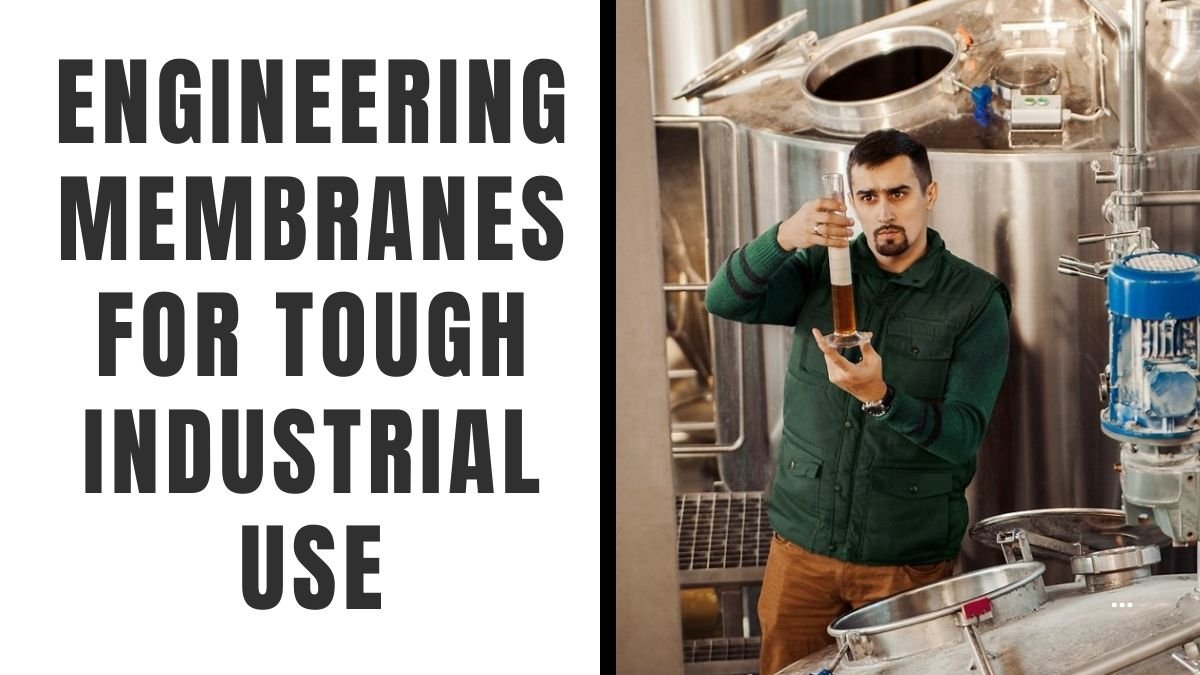Engineering Membranes: When we talk about industrial biotechnology, most people think of large reactors, enzymes, chemicals or production rates. But behind the scenes, there is a tiny and extremely important component working—the cellular membrane. This fine structure, only a few nanometers thick, determines the survival and performance of any microorganism. It not only separates the cell from the outside environment but also acts as a smart gatekeeper, deciding which molecules get in and which get out.
At the industrial level, where production processes run continuously for days or weeks, the importance of membrane strength and functionality increases manifold. This is why membrane engineering is today considered not just a biological research topic but the key to industrial success.
The structure of cellular membranes: a subtle but complex world
The membrane is primarily composed of a lipid bilayer, to which proteins and sometimes carbohydrates are also attached. The hydrophobic (water-avoiding) tails and hydrophilic (water-attracting) heads of lipid molecules form a unique structure that provides both stability and flexibility.
The transmembrane proteins within play a key role in the transport of nutrients, ions, gases, and larger molecules, while the carbohydrate-decorated surfaces contribute to cell recognition and signaling.
In the industrial context, this structure faces many challenges—high temperatures, solvents, osmotic pressure, and chemical stress. If the membrane is weakened, the entire production process can slow down or stop.
Industrial challenges: Membrane’s biggest test
In the pharmaceutical, food processing, biofuel, and chemical industries, microorganisms often have to work in conditions that are outside their natural range.
- High temperatures: In biofuel production or processes involving thermal treatment, temperatures can be 50-60°C or even higher.
- Solvent effects: During bioproduct extraction, organic solvents can dissolve the lipid layer of a membrane.
- High pH or low pH: Some processes take place in extremely acidic or alkaline environments, which can break down the membrane structure.
- Osmotic stress: High salt concentrations or sugar solutions can shrink or swell a cell by changing the flow of water.
These challenges mean that natural membranes are not adequate and must be engineered to make them stronger.
Alterations in lipid structure: the first step to strength
The stability of the lipid bilayer depends on the type of fatty acid.
- Saturated fatty acids: These are straight chains, making the membrane dense and rigid. This provides stability at high temperatures.
- Unsaturated fatty acids: These contain double bonds, which create bends and keep the membrane flexible, useful in cold environments.
For example, thermophilic bacteria such as Thermus thermophilus have membranes rich in saturated fatty acids, making them stable even at 70°C. In contrast, species such as Pseudomonas have a high content of unsaturated fatty acids, making them active even in cold environments.
Industrially, we can tailor the membrane structure of any microorganism to our needs by simply altering the lipid biosynthesis genes.
Restructuring the protein profile: Another layer of functionality
In addition to lipids, membrane proteins also play a key role in industrial performance. These proteins not only act as transport channels and pumps but are also involved in signal transduction and energy production.
If an industrial process requires the entry of a particular substrate in large quantities, transport proteins with a high capacity for that substrate can be incorporated into the membrane. Similarly, if a harmful byproduct needs to be removed, special efflux pumps can be activated.
Synthetic biology: A new era in membrane design
Synthetic biology has taken membrane engineering to a new level. We can now create fully designed artificial membranes, not just rely on natural variation.
- Top-down approach: Genetically modifying existing organisms to redesign their membranes.
- Bottom-up approach: Creating new membranes from completely artificial lipids and proteins.
With these techniques, we can create microorganisms that can tackle multiple industrial challenges simultaneously.
Evidence of high performance: real examples
The effectiveness of membrane engineering has been seen not just in theory but in real industry.
- Gas separation membranes: Stable in air separation even at 200°C.
- CO₂ separation membranes: Active up to 400°C.
- Hydrogen and helium separation: Effective even at over 500°C.
These advances break the limitations of conventional polymer membranes and make industrial processes more efficient.
The future: smart and adaptive membranes
In the future we will see membranes that sense their environment and adapt. For example, they compact their lipids when the temperature increases or close their protein channels when an organic solvent is introduced.
These “smart membranes” will not only reduce costs but also increase production rates and sustainability by several times.
